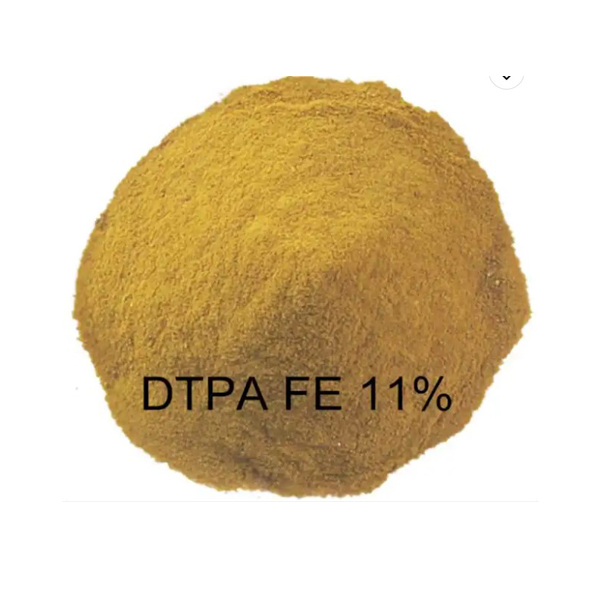
News
Dec . 07, 2024 03:41 Back to list
Exploring the Benefits and Applications of EDDS Chelating Agents in Various Industries
Understanding EDDS Chelant A Comprehensive Overview
EDDS, or Ethylenediaminedisuccinic acid, is a chelating agent that has gained considerable attention in various fields, including agriculture, environmental science, and industrial applications. As a biodegradable and eco-friendly alternative to traditional chelating agents, EDDS offers substantial benefits in terms of sustainability and effectiveness.
What is EDDS Chelant?
EDDS is a member of the aminocarboxylic acid family and is known for its ability to bind metal ions, forming stable complexes. This property is crucial for numerous applications, particularly in scenarios where controlling metal ion availability is essential. The structure of EDDS contains two succinic acid groups linked to an ethylenediamine backbone. This configuration allows it to effectively stabilize various metals, such as calcium, magnesium, and iron, among others.
Applications of EDDS Chelant
1. Agriculture In agriculture, EDDS is primarily used as a soil conditioner and nutrient carrier. Its chelating properties enhance the availability of essential micronutrients to plants, promoting healthier growth and improving crop yields. Compared to conventional chelating agents like EDTA, EDDS is more biodegradable, which minimizes harmful environmental impacts.
2. Environmental Remediation EDDS has significant potential in soil and water remediation projects. Its ability to mobilize heavy metals allows for the extraction of contaminants from polluted environments. This makes it a valuable tool for cleaning up sites contaminated with metals through industrial activity or accidental spills. Unlike traditional chelators, EDDS does not persist in the environment, reducing the risk of secondary pollution.
3. Industrial Applications In the industrial sector, EDDS is employed in various cleaning formulations and as an additive in detergents. Its chelating ability helps to enhance the efficiency of cleaning products by allowing them to work effectively in hard water. This property enables manufacturers to develop greener cleaning products that still meet high-performance standards.
4. Analytical Chemistry EDDS is also utilized in analytical chemistry where it aids in the detection and quantification of metal ions. Its ability to form stable complexes makes it an essential component in various analytical methodologies, including spectrophotometry and chromatography.
edds chelant

Advantages of Using EDDS
- Biodegradability One of the most significant advantages of EDDS is its environmental friendliness. Unlike conventional chelating agents that may persist in the environment, EDDS breaks down into non-toxic byproducts, reducing the risk of long-term ecological damage.
- Effectiveness EDDS can form stable complexes with a wide range of metal ions, making it versatile for various applications. Its effectiveness in different pH levels also makes it suitable for various environmental conditions and agricultural practices.
- Safety EDDS is considered to be less toxic than many traditional chelators, making it safer for both human exposure and ecological interactions. This safety profile is especially attractive in food and agricultural applications.
Challenges and Future Directions
Despite its many advantages, the use of EDDS is not without challenges. The cost of production can be higher compared to traditional chelating agents, which may limit its widespread adoption. Ongoing research aims to optimize production processes and reduce costs, making EDDS more competitive.
Furthermore, while the biodegradable nature of EDDS is beneficial, continuous monitoring is necessary to understand its long-term effects on various ecosystems, especially in large-scale environmental remediation efforts.
Conclusion
EDDS chelant represents a promising avenue in the field of chelating agents, with multiple applications across different sectors. Its biodegradability, efficacy, and safety position it well as a sustainable alternative to traditional chelators. As research continues to advance, we can expect to see even broader applications and enhanced formulations, contributing to a cleaner, greener future. The innovative applications of EDDS not only highlight the importance of sustainable practices but also showcase the potential for chemistry to address pressing environmental challenges.
-
Polyaspartic Acid Salts in Agricultural Fertilizers: A Sustainable Solution
NewsJul.21,2025
-
OEM Chelating Agent Preservative Supplier & Manufacturer High-Quality Customized Solutions
NewsJul.08,2025
-
OEM Potassium Chelating Agent Manufacturer - Custom Potassium Oxalate & Citrate Solutions
NewsJul.08,2025
-
OEM Pentasodium DTPA Chelating Agent Supplier & Manufacturer High Purity & Cost-Effective Solutions
NewsJul.08,2025
-
High-Efficiency Chelated Trace Elements Fertilizer Bulk Supplier & Manufacturer Quotes
NewsJul.07,2025
-
High Quality K Formation for a Chelating Agent – Reliable Manufacturer & Supplier
NewsJul.07,2025
